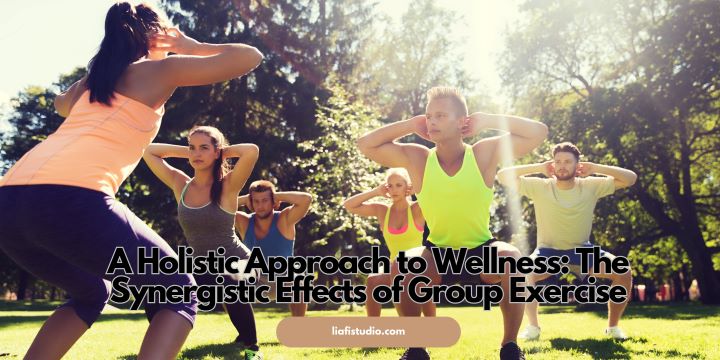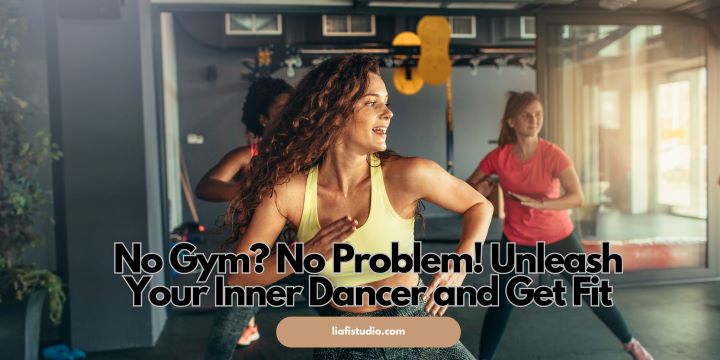In today’s fast-paced world, group exercise has become a dynamic tool for holistic wellness, offering physical and mental benefits. This article explores its diverse advantages, the importance of choosing the right program, promoting healthy habits, inclusivity, and future trends. Group exercise is a holistic approach to wellness that fosters camaraderie and integrates cutting-edge technology. Join us as we uncover its transformative power on the journey toward optimal health and vitality.
Benefits of Group Exercise: Community and Motivation
Exercising in a group offers physical and psychological benefits. The support and motivation from a fitness community increase accountability and help people stick to their workout routines. By participating in group fitness classes, individuals are propelled by the group’s energy, spurring them to persevere even when personal momentum flags. This team spirit can foster a shared sense of progress and accomplishment that is rare in solitary workout regimens.
Choosing the Right Group Exercise for Your Fitness Goals
The journey towards fitness is personal and replete with individual goals ranging from building endurance to increasing flexibility or strength. The key to staying committed and enthusiastic about exercise is to partake in workouts that move you toward your objectives and delight you. Whether it’s the rhythmic beat of a dance class that speaks to your soul or the mental focus demanded by martial arts, selecting the right exercise program is crucial. With the bounty of options available, from aqua aerobics to Zumba, there’s a class that aligns with everyone’s preferences and desired outcomes. Understanding your personal goals and assessing different group exercise offerings can help you land the perfect match, ensuring each workout is a step toward improved health and is filled with joy.
Group Exercise and Mental Health: A Dual-Benefit
The psychological benefits of group exercise are diverse and profound. Alongside the well-documented endorphin rush associated with physical exertion, group exercise provides social interaction that can alleviate loneliness and isolation. A study published in the Psychology of Sport and Exercise journal found that working out in a group lowers stress by 26% and significantly improves quality of life. The shared environment of a fitness class can engender a feeling of inclusion and collective achievement that nurtures mental wellness. The mental health benefits of such shared workouts make it an invaluable tool in the modern-day arsenal against stress and mental health challenges.
Integration of Technology in Group Exercise
Modern technology has transformed the group exercise space, offering tools to enhance the experience and provide measurable feedback on individuals’ progress. Technology allows participants to personalize their group workout sessions, from fitness trackers to smart gyms. Real-time calorie burn, aerobic effectiveness, and muscle engagement data can be tracked and analyzed. This information allows participants to understand their bodies’ responses to exercise better and fine-tune their efforts for improved results. Technology also offers new forms of community, with online leaderboards and shared workout stats fostering a sense of connection even outside the physical gym space. These technological advancements are not merely conveniences; they infuse workouts with insight and camaraderie that extend beyond the gym’s walls.
How Group Exercises Promote Healthy Lifestyle Habits
Committing to a regular workout routine within the structure of a group exercise program can have a ripple effect in all aspects of one’s life. This commitment often encourages healthier eating habits as individuals become more attuned to their body’s needs and the fuel required to perform optimally. Moreover, the time management skills necessary to attend scheduled classes can teach discipline that increases productivity and organization in other areas. Lasting friendships formed in fitness classes often extend into social circles that support and value health and wellness, further entrenching the lifestyle changes initiated by the group exercise habit. In this way, the impact of group workouts extends far beyond the calories burned – instigating a comprehensive lifestyle transformation geared towards overall wellness.
Group Exercise for Special Populations
Diversity in fitness pertains to exercise variety and caters to different abilities and life stages. Providing tailored options for special populations such as the elderly, pregnant women, or those with specific medical concerns is essential in promoting inclusivity within the group exercise domain. Specially trained instructors can create modifications and offer advice that allows these individuals to participate safely and effectively. Senior-specific classes focus on balance and functionality, while prenatal sessions address the unique needs of expecting mothers. The inclusivity within group exercise offers a platform where everyone can engage in and benefit from structured physical activity regardless of their background or life situation.
Future of Group Exercise: Trends to Watch
The evolution of group exercise is a testament to its adaptability and the constant search for engaging ways to promote fitness. For example, hybrid classes that combine different exercise styles to keep participants engaged and tackle multiple fitness aspects at once are becoming increasingly popular. With the advent of mixed and augmented reality technology, we are only beginning to scratch the surface of what’s possible in creating immersive and interactive workout experiences. From streaming live classes to the potential for virtual reality-enhanced workouts that transport participants to digital landscapes, the emerging trends point towards a future where the interplay between technology, fitness, and community reaches new heights, redefining the group exercise experience entirely.




